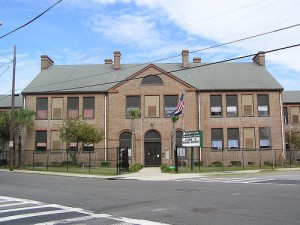Classroom Contemplations: Testing Reinforces Bad Behavior
Editor’s note: Names of teachers and students have been changed.
There are some real perils to systems which try to reduce teacher performance to a single number, such as many of our new “value-added” formulas.
The first is that whatever you decide to measure — and, implicitly or explicitly reward — is what you are going to get.
Take a look back a few years at our mortgage crisis. One of the precipitating structural problems was that the system evolved so that there was an incentive to write more mortgages. No longer were people rewarded for responsible lending. They were rewarded for the amount of loans they produced. We all know what happened. More mortgages!
It didn’t matter that many properties and property owners were bad risks. The measurement drove the production. So you have to be very careful in deciding what to measure.
When we narrowly define increased test scores as the “value” teachers add to students, then that is what schools will work towards.
They will not question the values of these scores. They will design their curriculum and their strategies in ways that they believe (often erroneously) that will increase test scores.
We see this already in schools that have become virtual test-prep factories, banning all “extraneous” experiences, like field trips, guest speakers, etc., until testing is over in April.
The second important danger that comes with simple measurement systems is the reification of results. A circular logic develops. If we define success as high test scores, then high test scores become success.
Even though these tests are actually supposed to measure what’s happening intellectually to our students, we shut our eyes to what we actually see in our classrooms in favor of a single score. Test scores matter much more than trying to determine whether or not a student has developed the habits of mind of a thinker.
A 2008 cheating scandal at Sanders-Clyde Elementary School in Charleston, South Carolina illustrates these twin dangers of measurement. A school had improved remarkably over a period of several years.
Not only had its test scores jumped, but the entire school culture changed for the better. The school’s principal helped families find food, clothing or pay their utility bills.
It turned out that the test scores had been faked. Someone had gone back and erased answer sheets to improve student scores, showing what happens when test scores are the single most important measure of school quality.
The principal left to take a job in another state.
But the community’s response revealed the other danger of these types of measurements. When it was revealed that the test scores had (potentially) been faked, there was a crisis. Many wondered if they could trust that the school had actually gotten better, despite all the positive changes they had seen with their own eyes.
This was the a perfect example of losing the forest for the trees. Was there no other way to look at this school to determine its quality besides test scores? The answer seemed to be no.
It’s a cautionary tale. One that we ignore at our own peril as we continue to design evaluation systems that narrowly define the value of teachers and schools, and limit the ways we can measure such value.
Jeremy Glazer is a Miami-Dade teacher writing about classroom issues for StateImpact Florida. Want to sound off on something Glazer has written? Want to suggest a topic for him? Send us an email at Florida@stateimpact.org and put “Classroom Contemplations” in the subject line.


